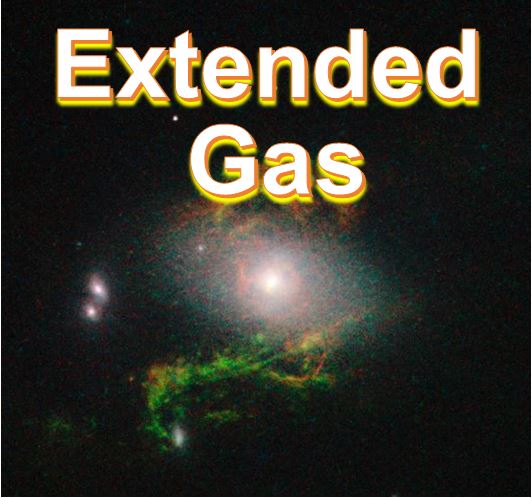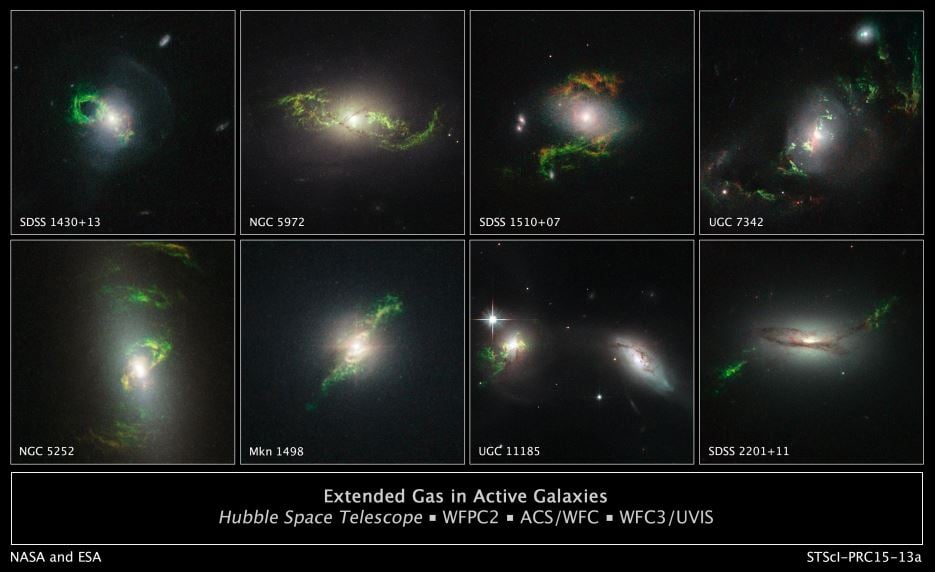Spectacular images of eight huge green clouds of gas around eight different active galaxies tens of thousands of light years from Earth have been captured by the Hubble Space Telescope as it celebrates its 25th birthday.
According to the HubbleSite, eight years ago, Hanny van Arkel, a Dutch schoolteacher, was the first to discover the ghostly structure close to a galaxy when she was taking part in an online amateur scientists project called Galaxy Zoo.
The galaxy hosts a bright quasar – a huge and extremely distant celestial object, emitting incredibly large amounts of energy – that may have illuminated what Ms. van Arkel had spotted, by hitting it with a beam of light from hot gas around a central black hole.

Extended gas in an active galaxy captured by Hubble Space Telescope. (Image: Hubblesite.org)
Eager Hubble Space Telescope astronomers followed-up the observations, which revealed knots of gas and dust in the ‘greenish blob’.
Believing that this find might offer insights into the enigmatic behavior of active galaxies, Bill Keel, an astronomer especially interested in galaxies who works at the University of Alabama, Tuscaloosa, started searching for other similar phenomenon.
Eight galaxies with same phenomenon found
He assumed if one strange blob is found in one part of the Universe, there are bound to be others elsewhere.
Two hundred volunteers joined Keel and examined archival data of 15,000 galaxies hosting quasars.
They eventually found eight other galaxies with active nuclei that contain illuminated material far outside the radius of the galaxy.

The Hubble Space Telescope found the eerie green clouds in eight active galaxies. (Image: Image: Hubblesite.org)
The eerie structures have spiral, looping and braided shapes. According to the Hubble images, they are like the remnants of galaxy collisions.
Keel said of the glowing structures “They don’t fit a single pattern.”
The ghostly wisps outside the host galaxy are thought to have been lit up by powerful ultraviolet radiation emanating from a supermassive black hole at the core of the host galaxy.
The most active of these galaxy cores are what we call quasars, where material that falls in is heated to a point where a brilliant searchlight shines into deep space. The beam of light is produced by a disk of glowing super-heated gas surrounding the black hole.
Keel said:
“However, the quasars are not bright enough now to account for what we’re seeing; this is a record of something that happened in the past. The glowing filaments are telling us that the quasars were once emitting more energy, or they are changing very rapidly, which they were not supposed to do.”
Hubble Space Telescope Video
Tony Darnell Dr. Carol Christian and Dr. Scott Lewis discuss some fascinating new observations of quasars made by the Hubble Space Telescope.
